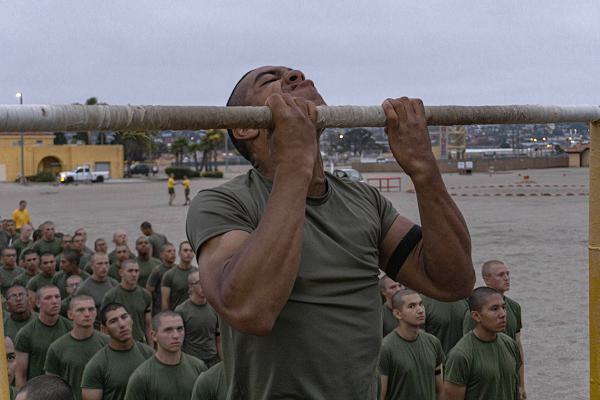
Marine Corps Recruit Depot San Diego, California. (July 18, 2024): The Marines want to know: Do you have a moral cause, something you are willing to fight for more powerful than the urge to quit? In this photo by Lance Corporal Alexandra M. Earl, a recruit performs pullups during a Marine Corps Physical Fitness Test, or PFT, that is one of the toughest in the world. Each year, Marines must demonstrate that they are physically fit for combat, regardless of the job they do. For these few proud warfighters, physical conditioning is a way of life that begins on their first day of Basic Training.
Before they even begin recruit training, aspiring Marines must pass the Initial Strength Test (IST) and are strongly encouraged to report to training with scores well above the minimum standards. The IST begins with three pull-ups or thirty-four push-ups (2:00 time limit), a planking exercise, followed by a 1.5 mile run in less than 14 minutes.
Once accepted for training, prospective Marines must build their conditioning to pass the PFT before they graduate Basic. The standard increases to more pull ups, timed planks, and an even longer 3-mile timed run that recruits must complete in less than twenty-eight minutes.
But that is only the beginning. The PFT is also designed to measure “functional” fitness by simulating the demands of battle while in full combat gear. The three parts of this test are Movement to Contact, the Ammunition Lift, and Maneuver Under Fire.
The Movement to Contact drill is an 880-yard sprint that that simulates the stress of running under battle conditions. The Ammunition Lift requires Marines to lift a 30-pound ammunition crate over their heads as many times as possible in a set amount of time. The Maneuver Under Fire challenge is a 300-yard course combining battle related tasks including crawls, ammunition resupply, grenade throwing, agility running, and the dragging and carrying of another Marine.
For Marines, exceeding the standard is the standard.


